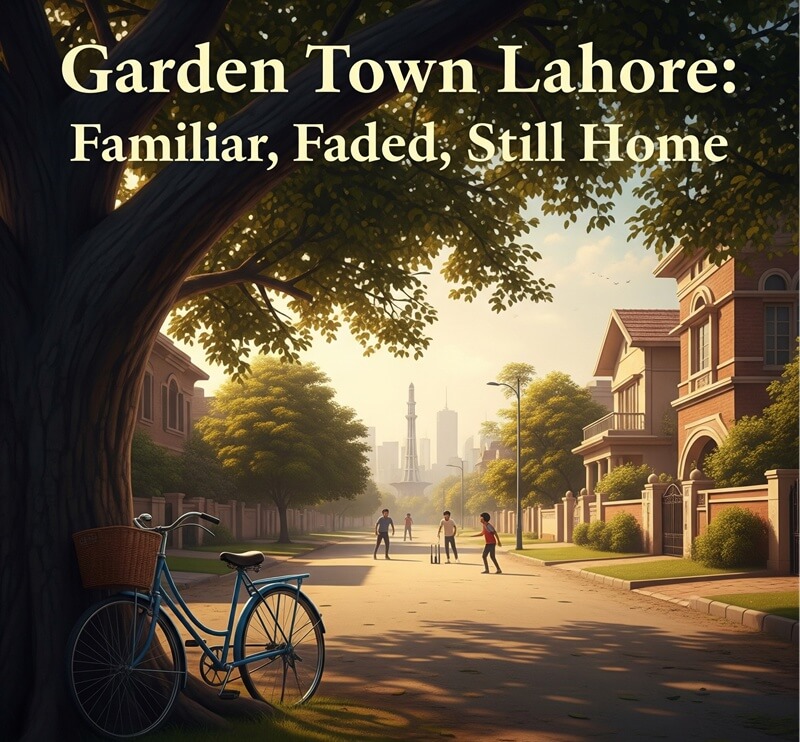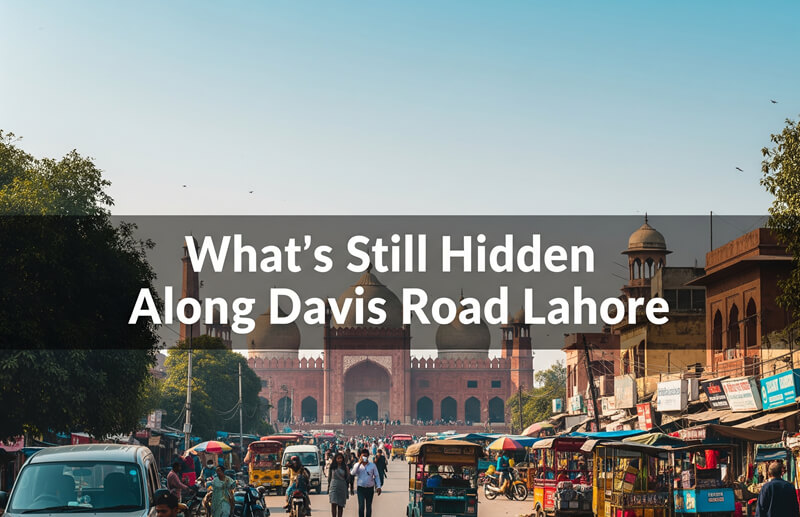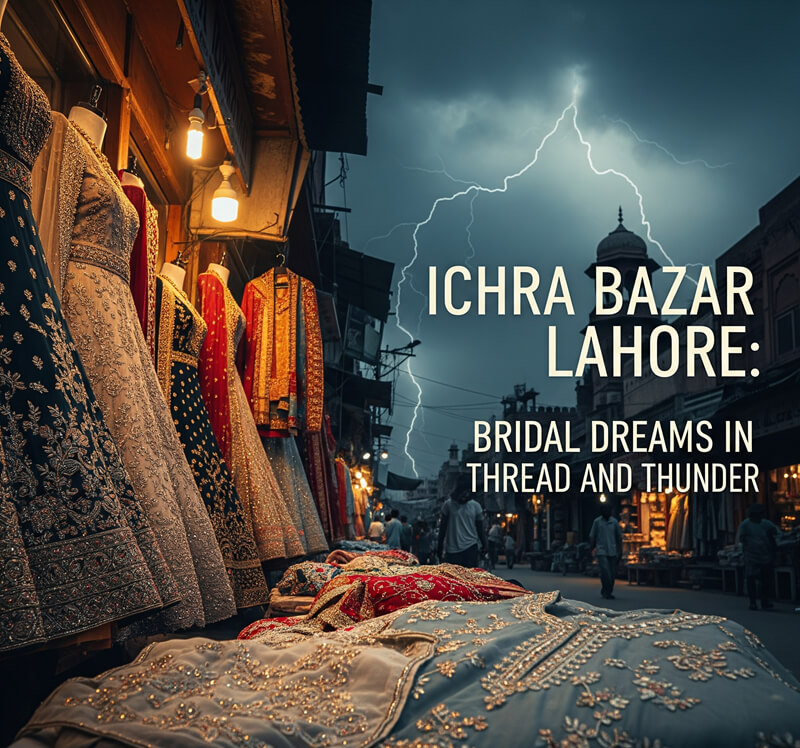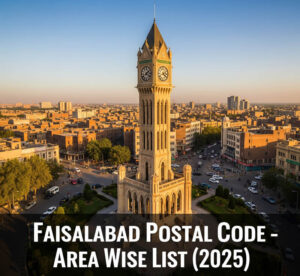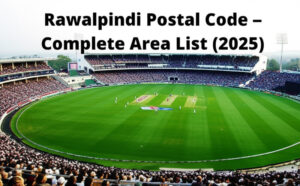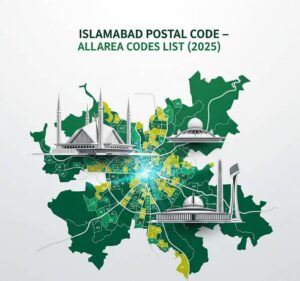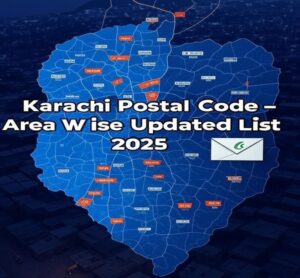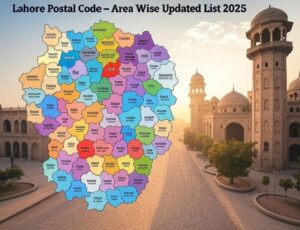Garden Town Lahore: Familiar, Faded, Still Home
Garden Town Lahore: Where the Past Still Has a Pulse
It’s the kind of place where trees are older than most houses. Streets curve without a pattern, and you can tell which house was built in the 80s just by the gate style. Garden Town Lahore doesn’t chase trends—it holds steady.
And honestly? That’s rare now.
Where Is Garden Town, Exactly?
Garden Town sits snugly between Ferozepur Road, Canal Road, and Model Town. From one end, you’re a few minutes from Kalma Chowk; from another, you’re practically in Liberty Market.
It’s like the city kept building around it but never through it. So while other areas exploded with plazas and flyovers, Garden Town stayed mostly the same—quiet blocks, leafy lanes, and that strange mix of homes, schools, and sudden banks.
Blocks, Maps, and a Lot of Wrong Turns
If you’ve ever tried navigating Garden Town without directions, good luck.
The layout isn’t a clean grid. It spirals and loops. You think you’re headed to Block A, and suddenly you’re staring at a D Block sign. But for locals, it makes perfect sense.
Each block has its own rhythm.
| Block | What You’ll Find There |
|---|---|
| A & B | Older houses, quiet lanes, families who’ve stayed for decades |
| C & D | Tuition centers, schools, and suddenly — bakeries |
| F | Hospitals, banks, traffic and more traffic |
| Tipu Block | Bit of everything—residences, offices, gyms, salons |
Ask someone from Tipu Block, and they’ll tell you it’s the heart of Garden Town. Someone from A Block will scoff and say, “It’s too noisy now.”
Both are right.
What You See on a Regular Day in Garden Town
Garden Town doesn’t rush, but it doesn’t sleep either.
Early morning, streets are quiet except for school vans and old men walking their slow morning routes. By mid-morning, the roads near Punjab University and Barkat Market get louder. You’ll see:
-
Office workers crowding chai stalls near Zahoor Elahi Road
-
Students heading toward coaching centers with files under one arm
-
Uniformed kids on bicycles wobbling through narrow lanes
-
That one guy in a Corolla who always double-parks outside the same pharmacy
By late evening, the main roads slow again—but inside the lanes, lights glow from kitchens, tuitions, and backyards.
A Familiar Scene: My Visit to Barkat Market
A few years ago, I was waiting for someone outside a photocopy shop in Barkat Market. It was late—maybe 9 PM. A boy on a cycle passed by, balancing two tiffin boxes. Probably delivering dinner.
Right then, a cat darted across the road, chasing something invisible. A man stepped out from a barbershop in flip-flops, sipping chai. No one looked stressed.
And I thought: This is Lahore, frozen in its own clock.
Garden Town vs Johar Town: A Different Energy
Garden Town isn’t as loud or fast as Johar Town, and it’s not as posh or polished as DHA. It’s somewhere in the middle—comfortably stuck in the 90s, in the best way.
| Feature | Garden Town | Johar Town |
|---|---|---|
| Roads | Narrow, curved | Wider, busier |
| Building style | Low-rise, older | Mixed: modern + plazas |
| Vibe | Residential, mellow | Commercial, active |
| Real estate trend | Stable | Fast rising |
People don’t just rent in Garden Town—they settle. A lot of families bought homes here and never left. And that tells you something.
The Best (and Worst) Parts of Garden Town
Let’s break it down honestly.
What Still Works:
-
Central location—almost everything is 10–15 minutes away
-
Lots of trees, shade, and actual footpaths
-
Fewer high-rises, which keeps it quieter
-
Close to universities, especially Punjab University and UMT
What Doesn’t Anymore:
-
Old sewerage, especially after rain
-
Electricity cables still crisscross in the sky
-
Limited parking in commercial patches
-
Traffic chokes during tuition and school pick-up hours
You’ll get a peaceful afternoon, but also a honk-filled 2 PM if you’re near a school.
Garden Town Through the Years
Older residents remember when there were more open plots than houses. They talk about when Liberty Market felt far and Kalma Chowk didn’t have a flyover.
Over time, things shifted. Houses added second floors. Markets filled with pharmacies, clinics, and mattress stores. The roads got narrower—not literally, but functionally.
Still, you walk through some streets and see a man reading the newspaper in a lawn chair, his gate open. That doesn’t happen much in the newer parts of Lahore.
Small Things People Love
Ask around, and you’ll hear similar answers.
-
The smell of paratha in the evening from tandoors near Barkat Market
-
The quiet lanes where kids still ride bicycles after Asr
-
The same milk shop your parents used still exists—same fridge, same calendar on the wall
-
The guy who sharpens knives on his cycle still comes every month
It’s the little routines that give Garden Town its comfort.
One Thought From a Longtime Resident
I spoke to a friend’s father who’s lived in Garden Town since the early 80s. I asked if he ever thought of moving to DHA.
He laughed. “Why? Everything’s here. My mosque, my chemist, my old friends—even the man who fixes my shoes hasn’t changed.”
There’s value in that kind of familiarity—especially in a city that’s always pushing upward.
Final Wrap-Up
Garden Town Lahore won’t trend on Instagram. It won’t surprise you with skyscrapers or curated food streets. But walk its roads, and you’ll feel something many neighborhoods have lost—balance.
It holds Lahore’s old rhythms without pretending to be something new. That’s not just rare—it’s grounding.
